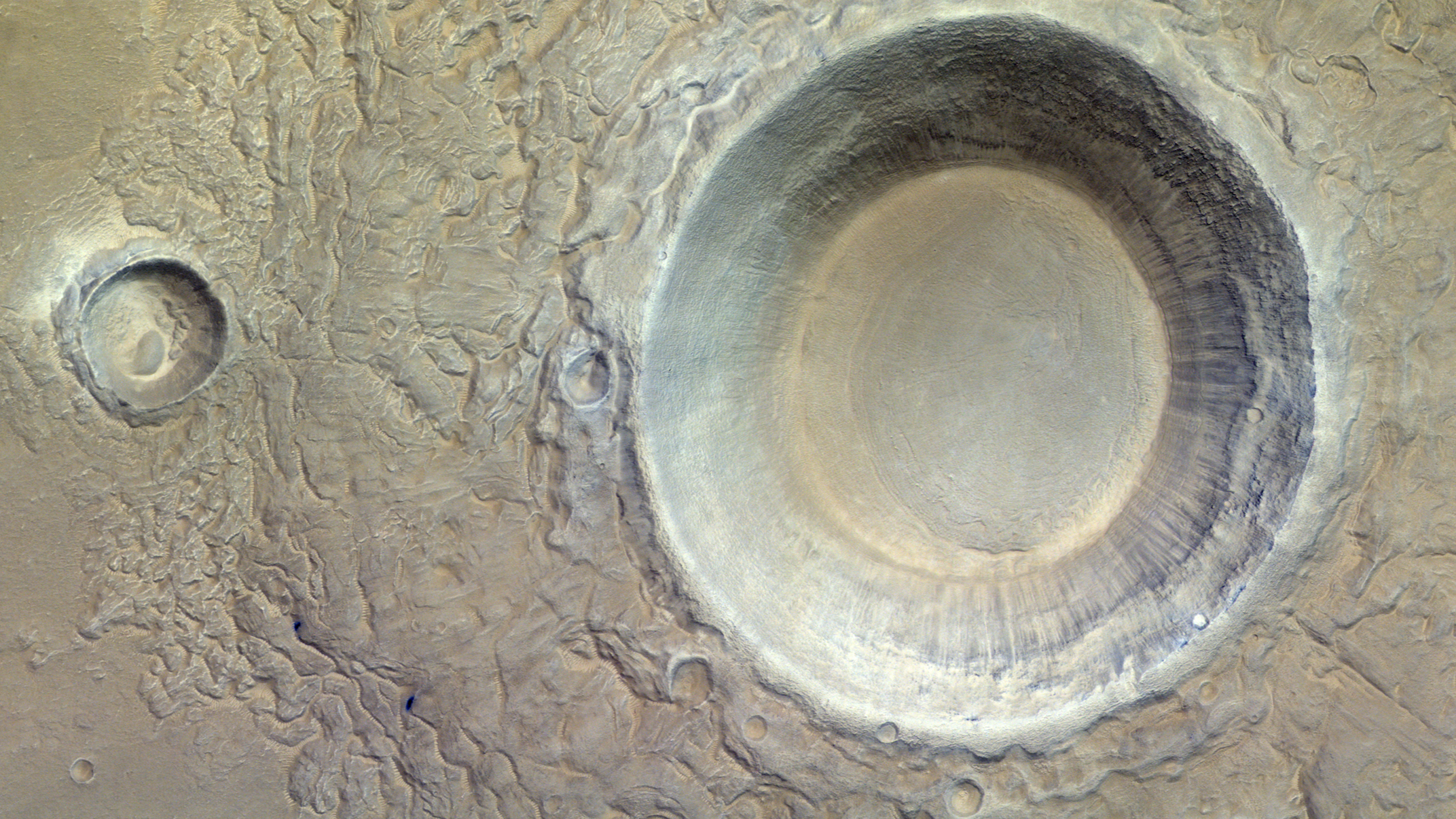
A massive Mars impact crater dominates a new view from the ExoMars Trace Gas Orbiter (TGO).
The result of an ancient asteroid impact, the crater is located in Mars' Utopia Planitia. That's the largest known impact basin in the entire solar system, with a diameter of roughly 2,050 miles (3,300 kilometers), or twice the size of Earth's Sahara Desert from north to south. Interesting ice-related features on and below the surface of the crater lend insight on the Red Planet’s watery past, according to a statement from the European Space Agency (ESA).
"This remnant of an ancient impact is just one of the many scars asteroids have inflicted upon the Red Planet," ESA officials said in the statement. "Water, volcanoes and impacts from asteroids shaped the martian surface in the ancient past. Mars is currently a cold, dry desert."
Related: Mars' water may have come from ancient asteroid impacts
The recent image was taken by ExoMars’ CaSSIS (Colour and Stereo Surface Imaging System) instrument from a distance of only 248 miles (400 km) above the crater. From this vantage point, the crater nearly fills the camera’s entire field of view. ESA shared a new panoramic image centered on the crater on May 15.
The Utopia Planitia region is known to exhibit icy features, including frost on its surface during the Martian winter. The crater, stretching roughly 5 miles (8 km) across, also shows signs of material ejected in a way that suggests there was water ice present when the asteroid hit the region in the distant past. Immense heat generated by the impact would have melted the water ice and forced the resulting mixture of liquid water and dust upward.

"The smooth look of the crater is consistent with other features in the region having evidence of a water-ice history," ESA officials said. "Zooming into the crater it is possible to see streaks on the walls of the crater, showing evidence of landslides, and ripples sculpted by the wind."
In addition to snapping stunning photos such as this, the orbiter is tasked with studying the planet’s atmospheric gasses and mapping Mars’ surface for water-rich locations. In turn, this data can be used to better understand the history of water on Mars and the possible existence of ancient life.







